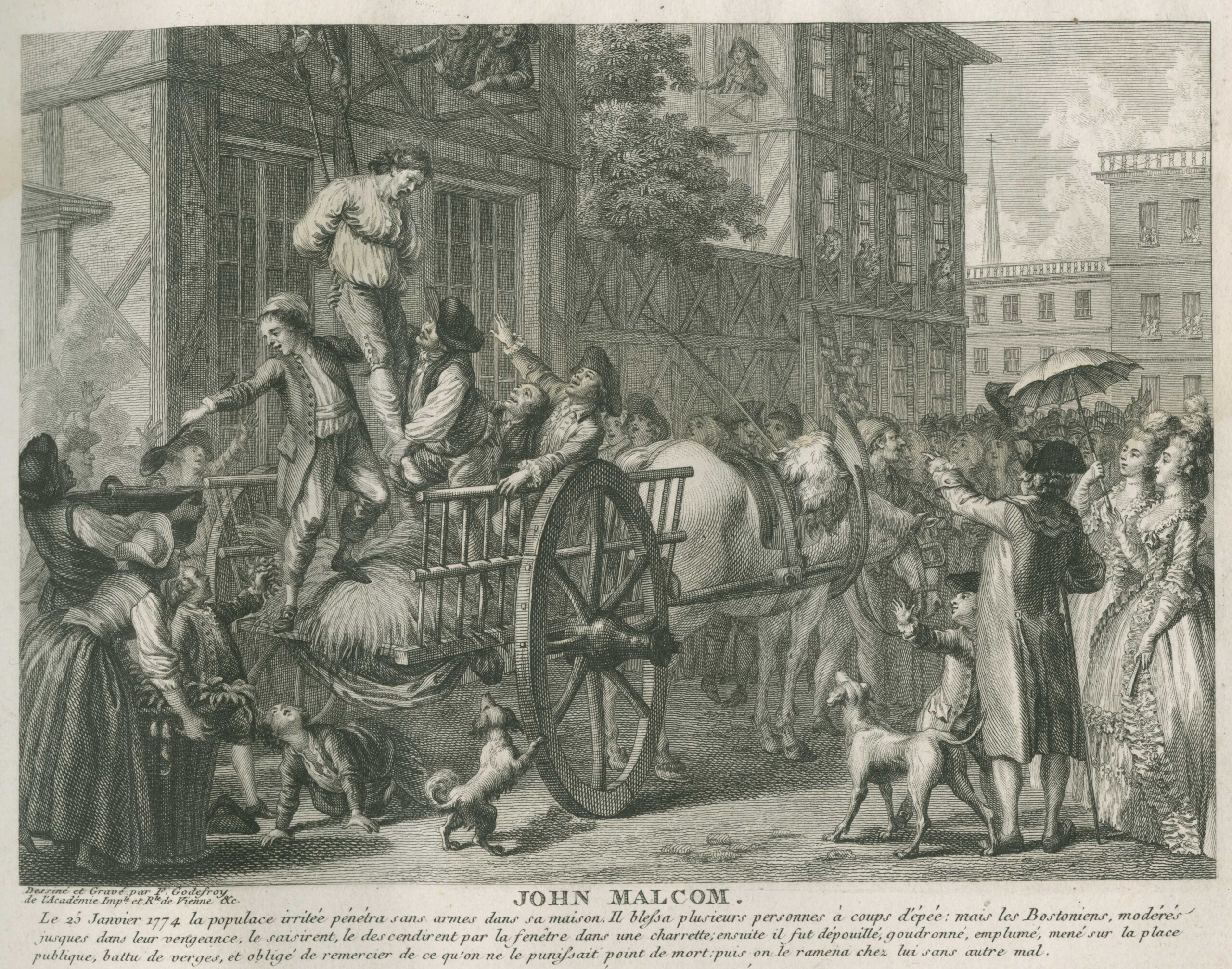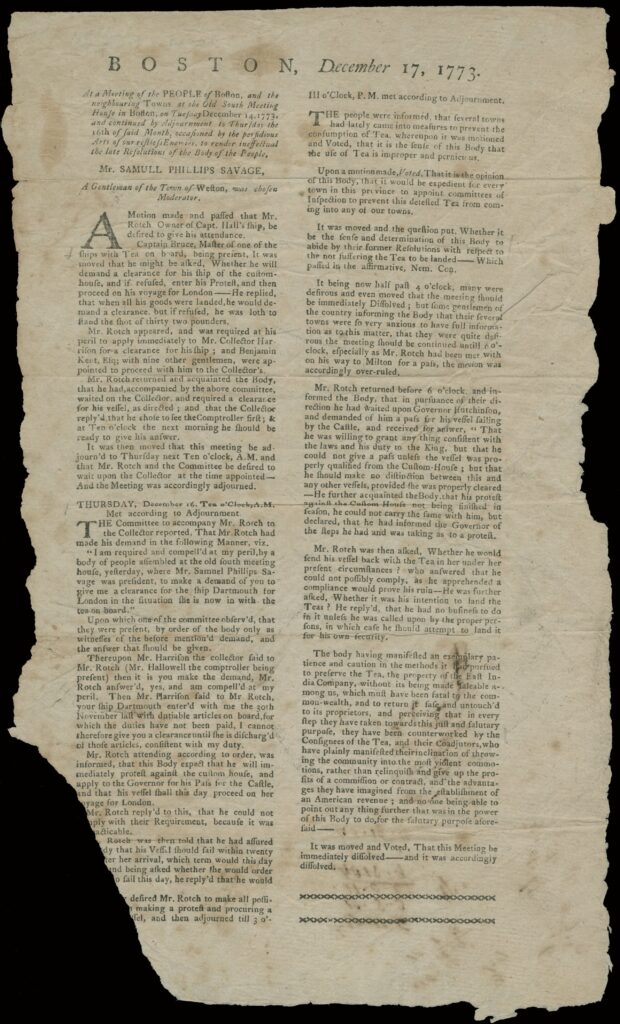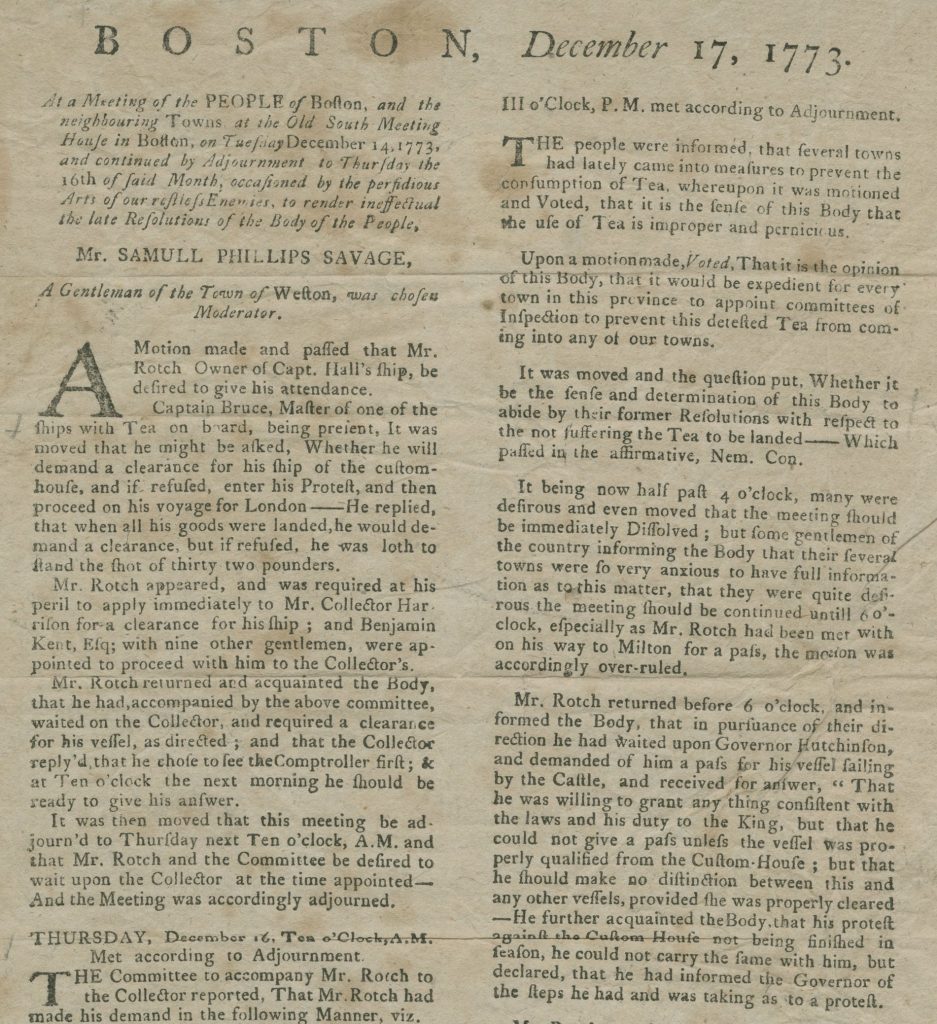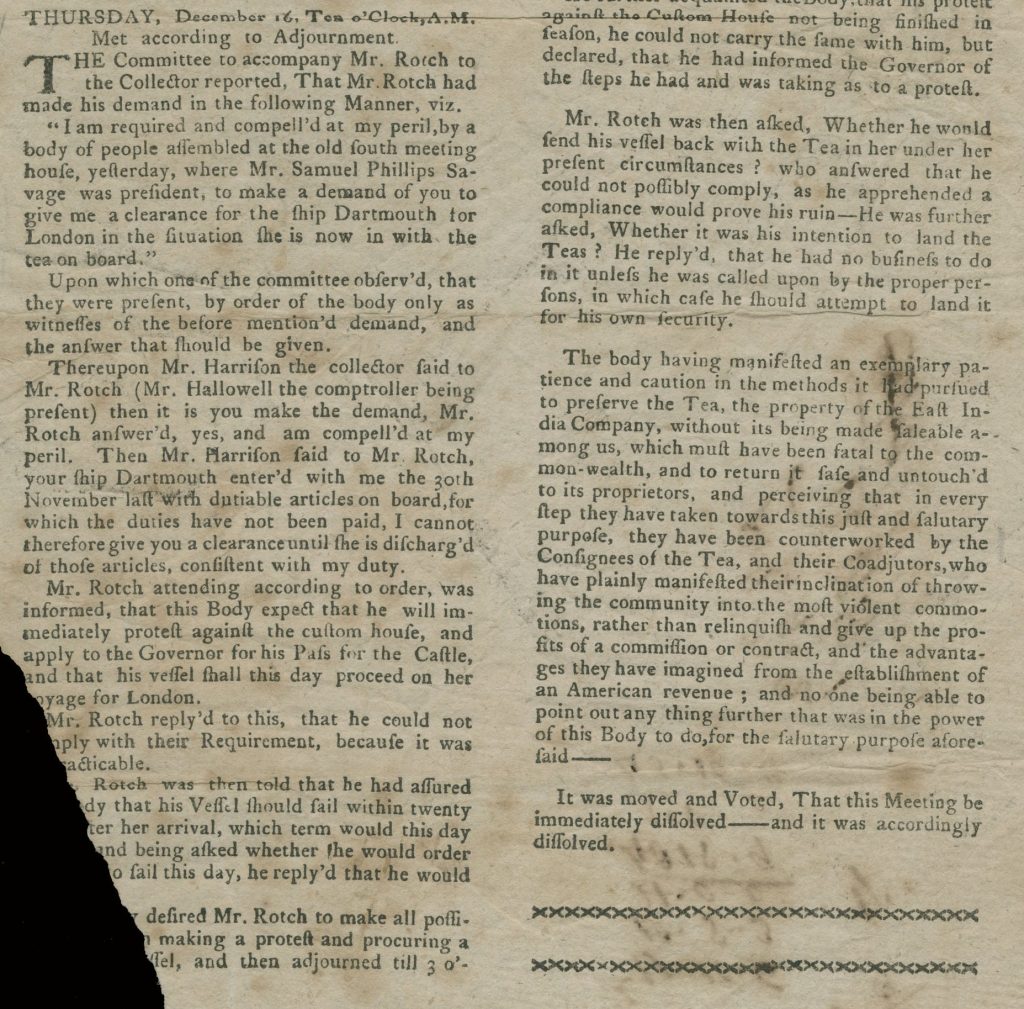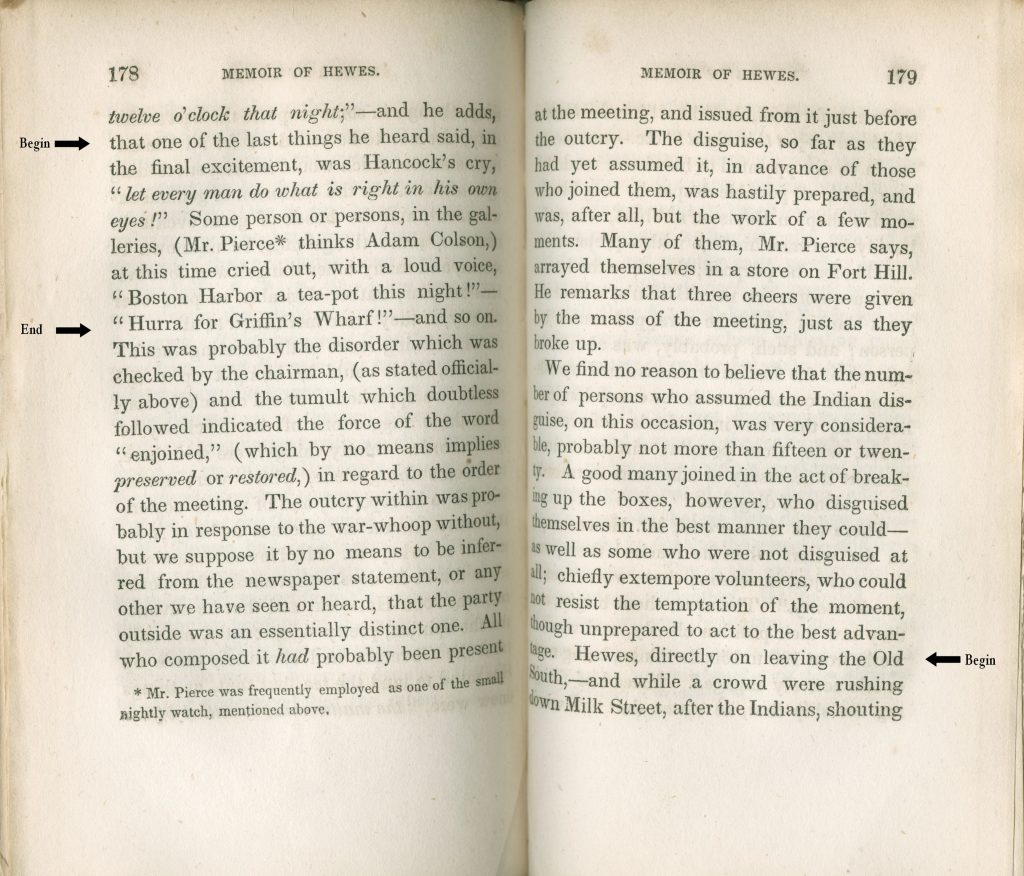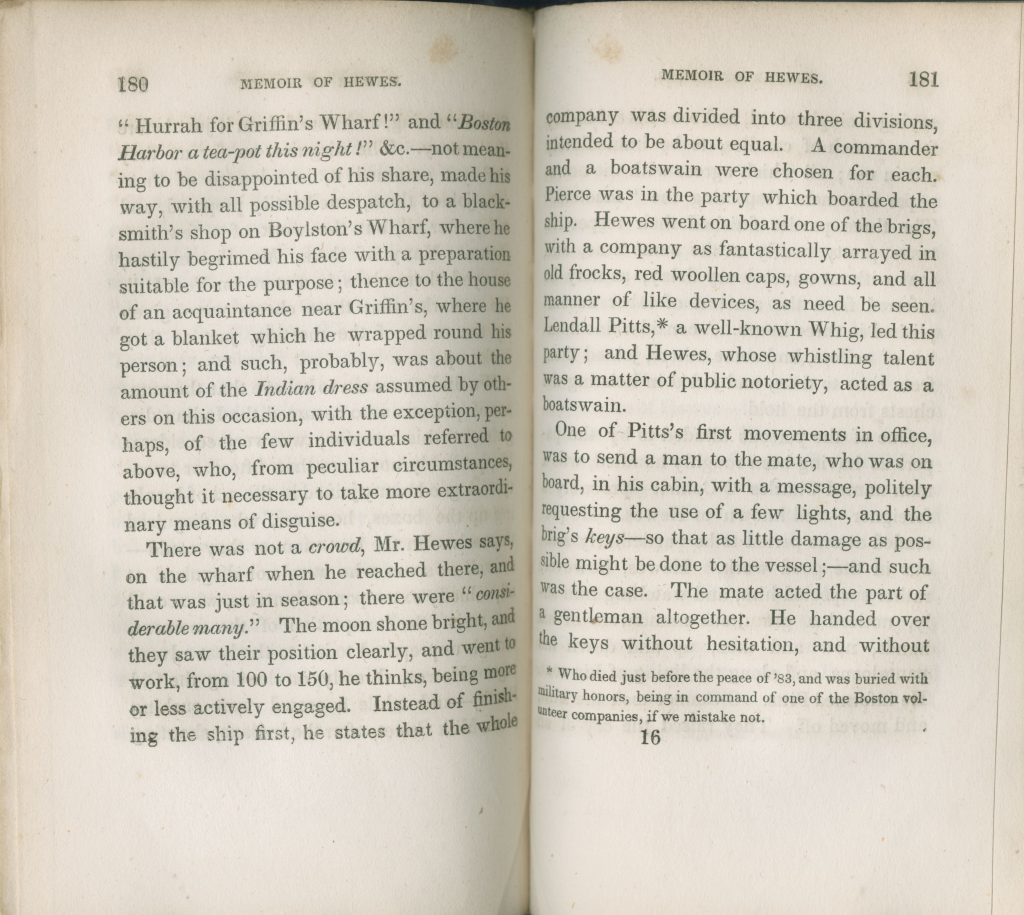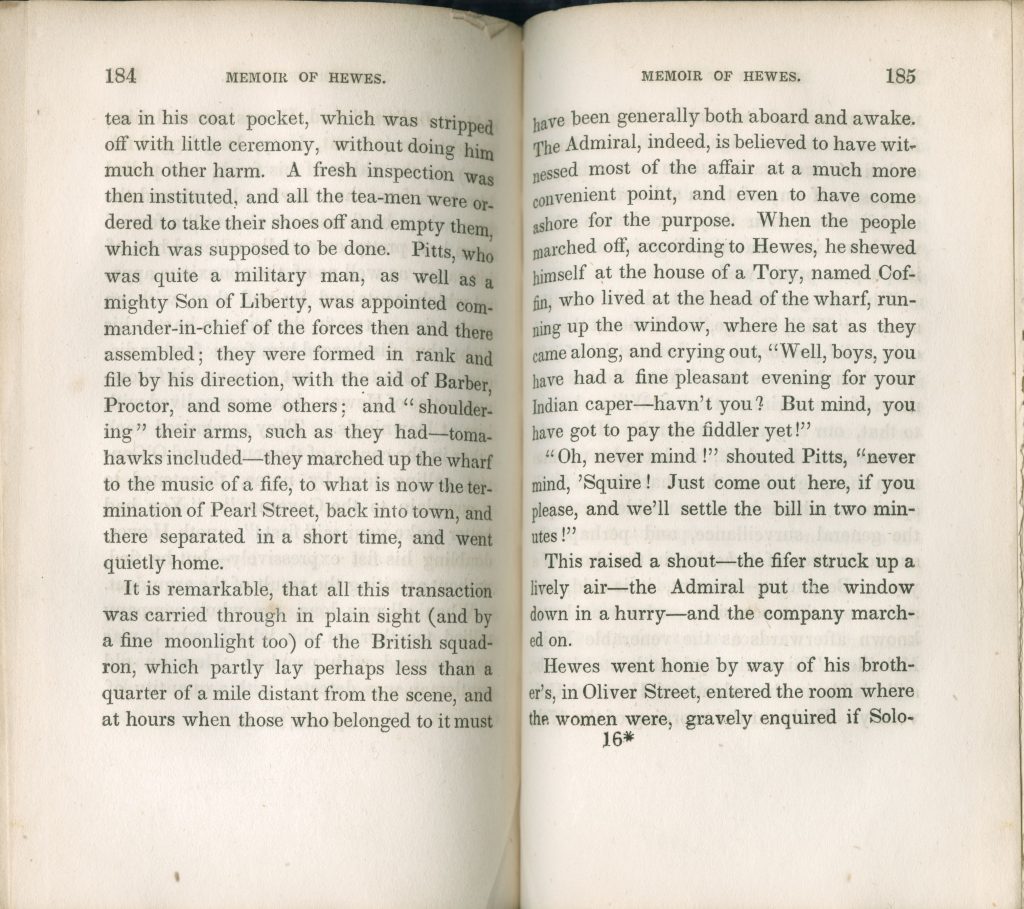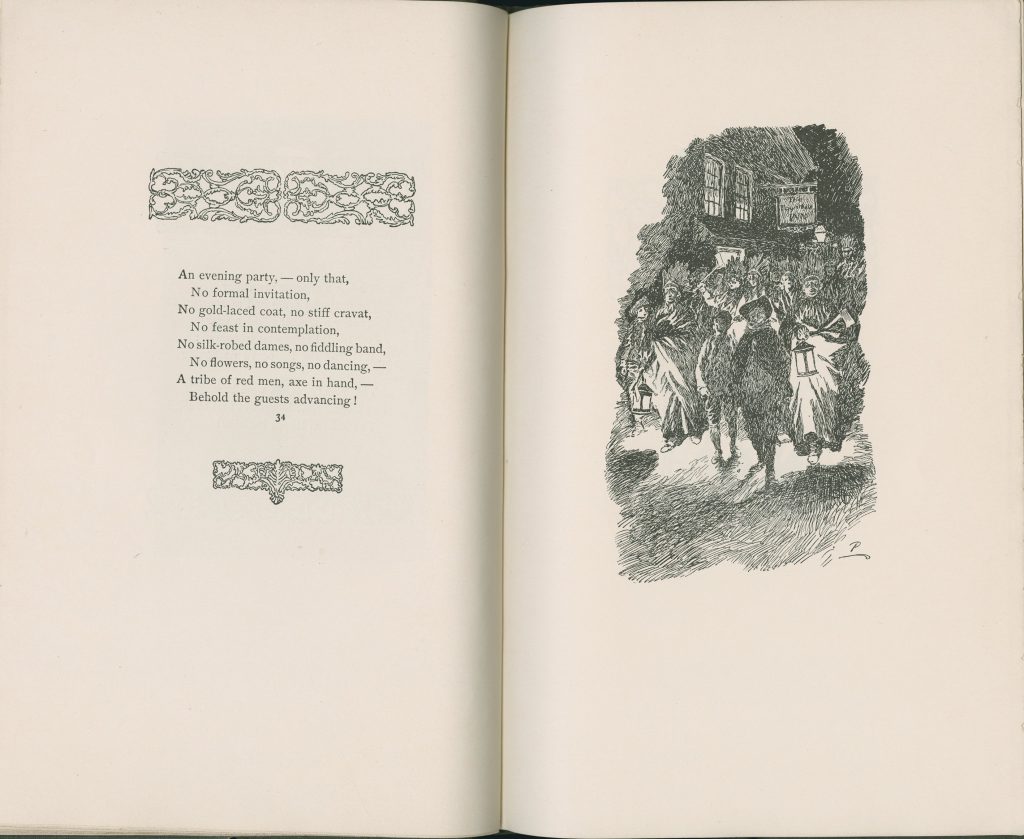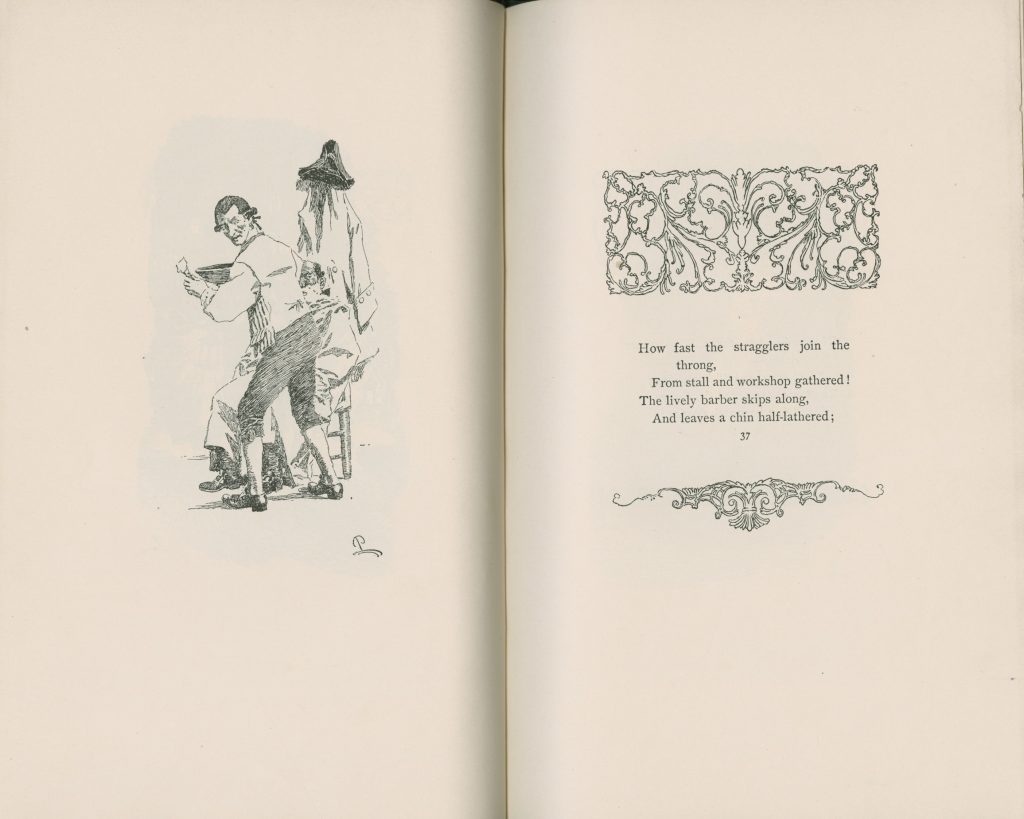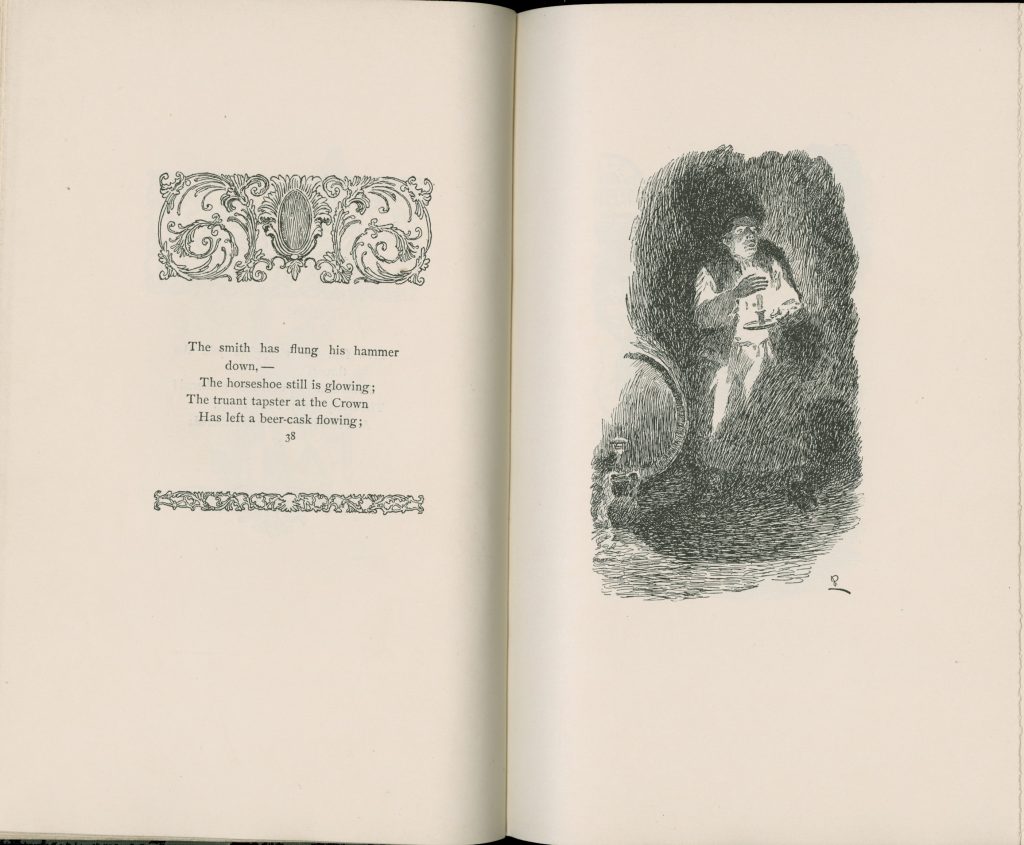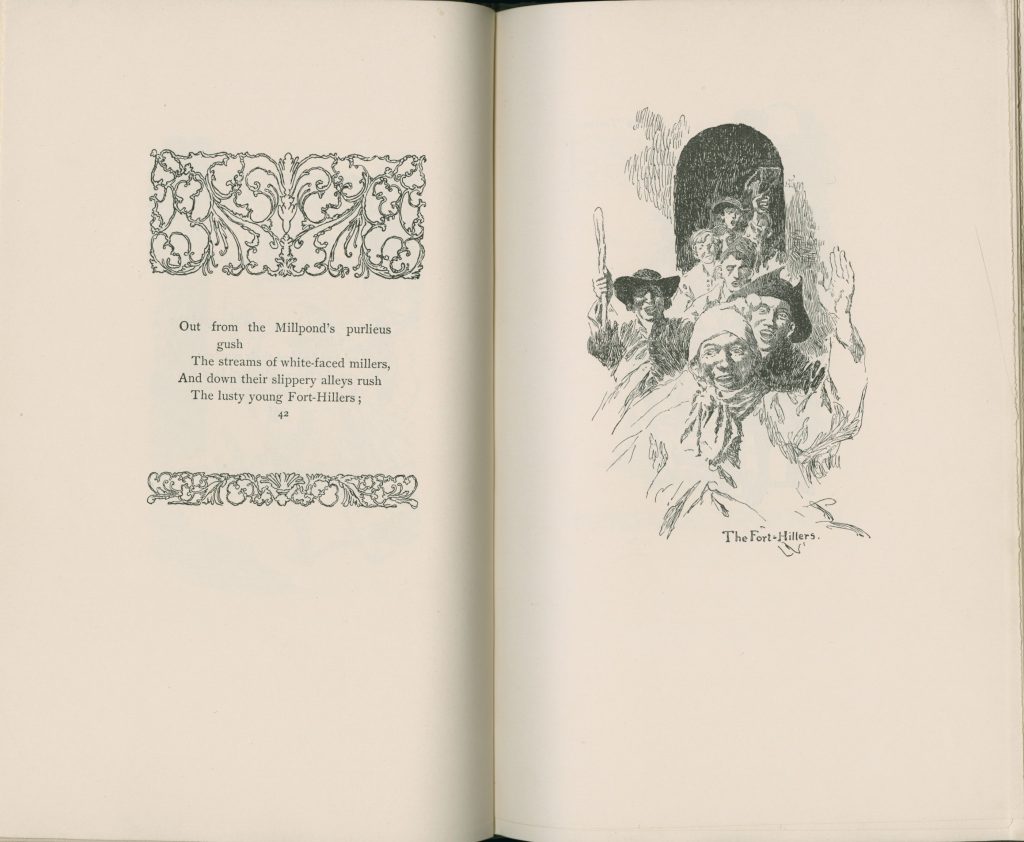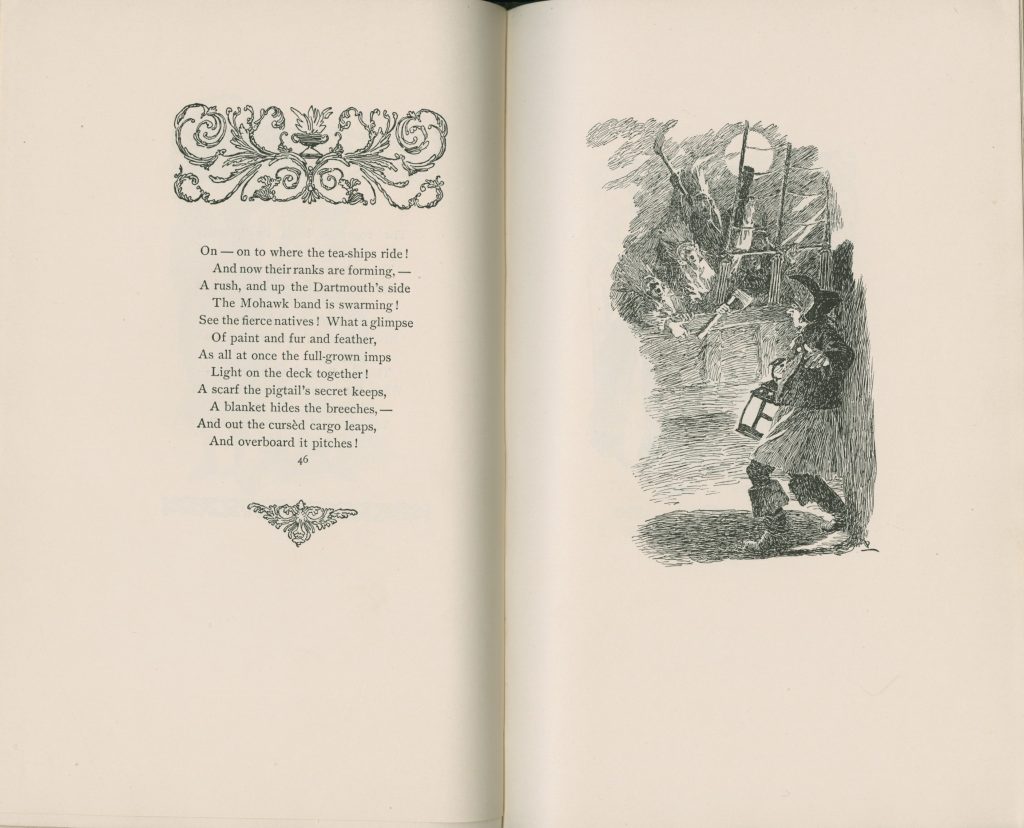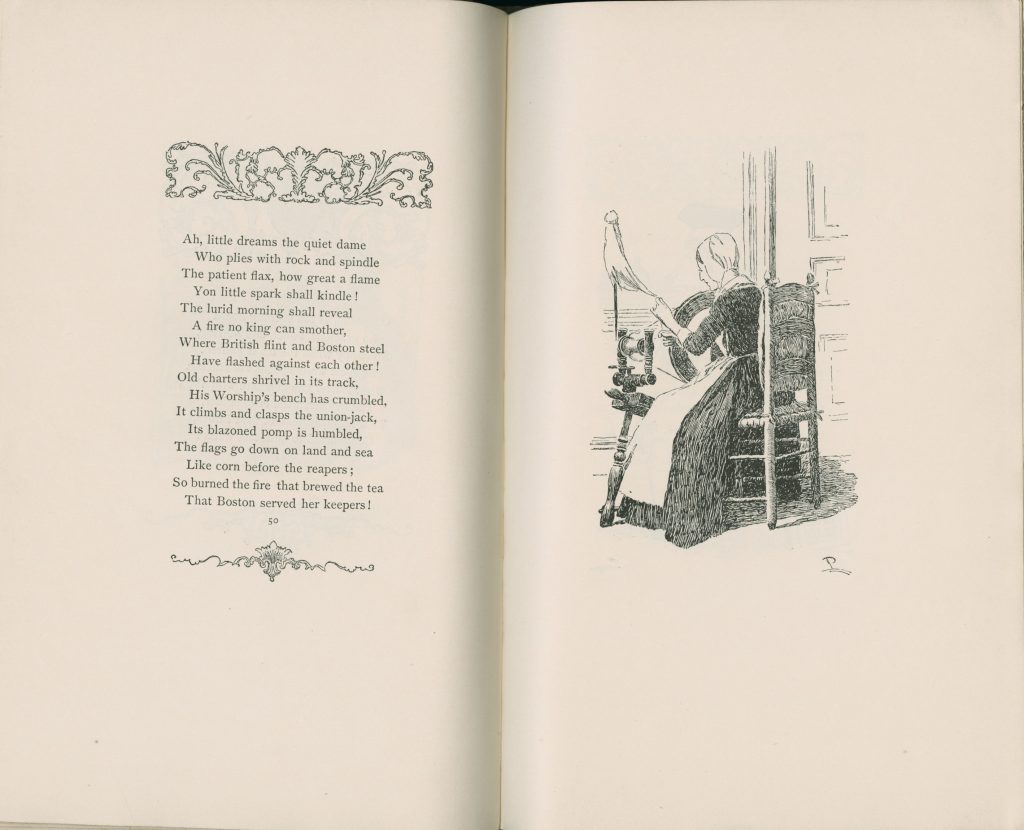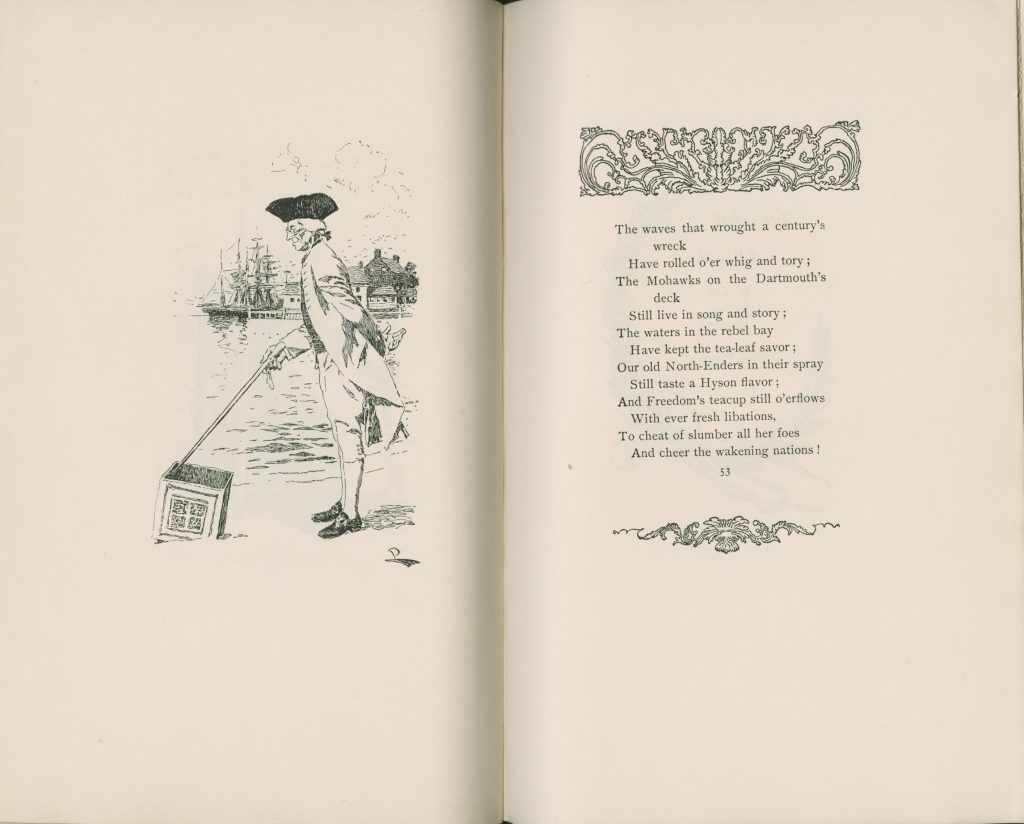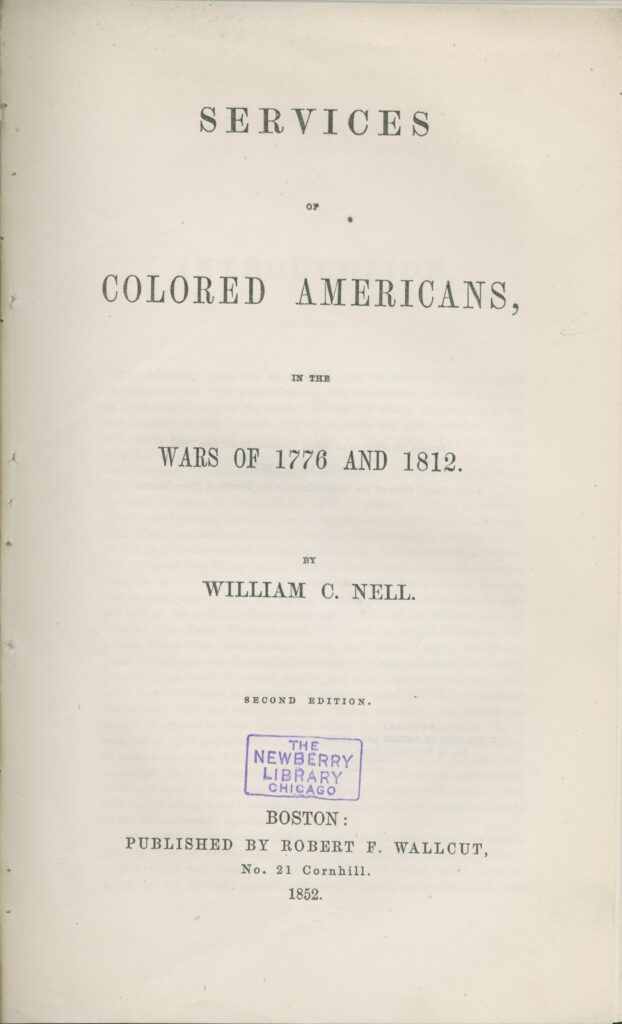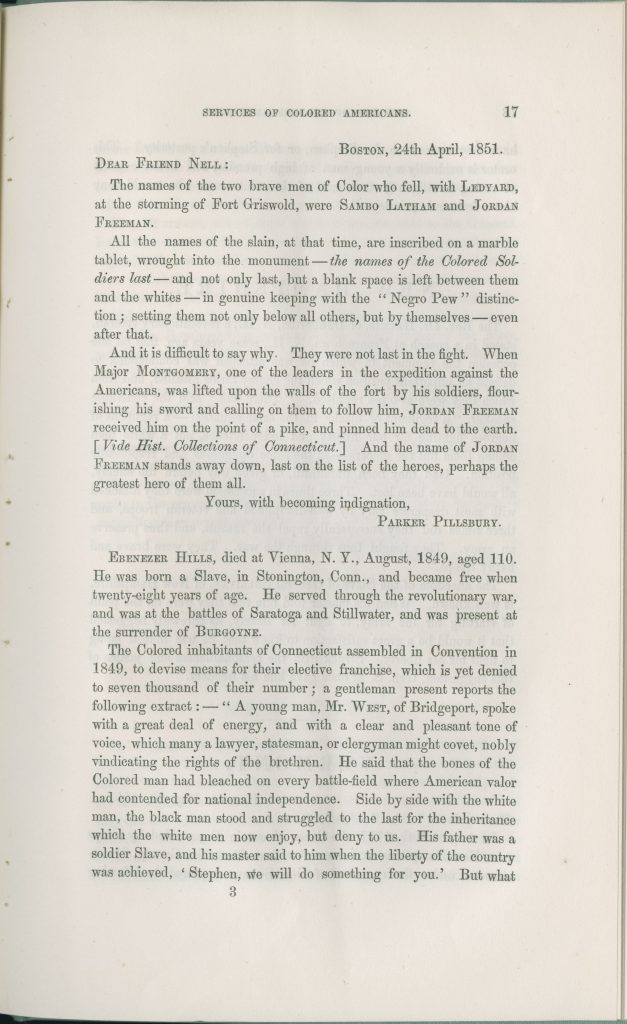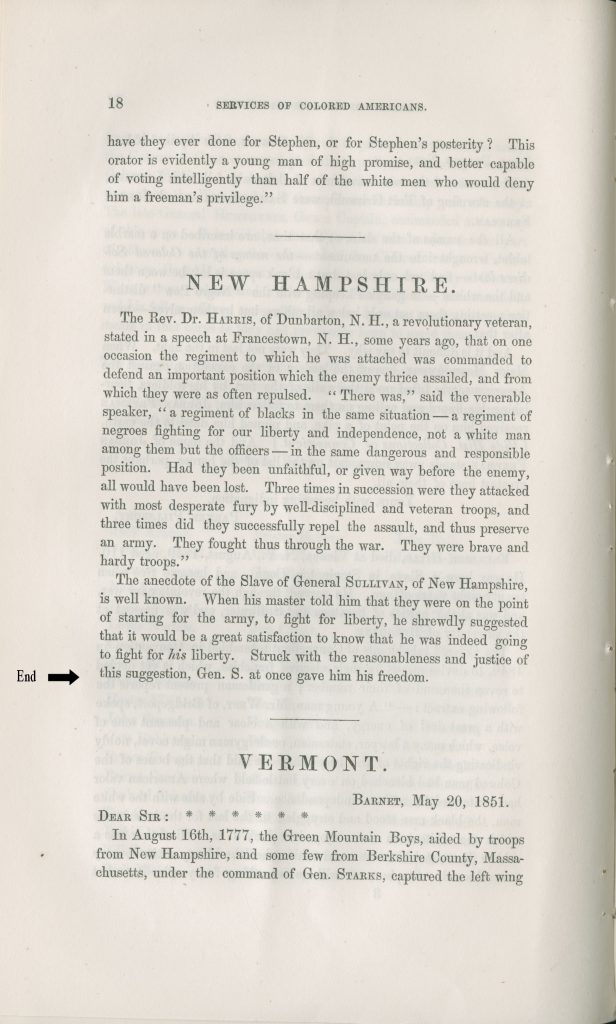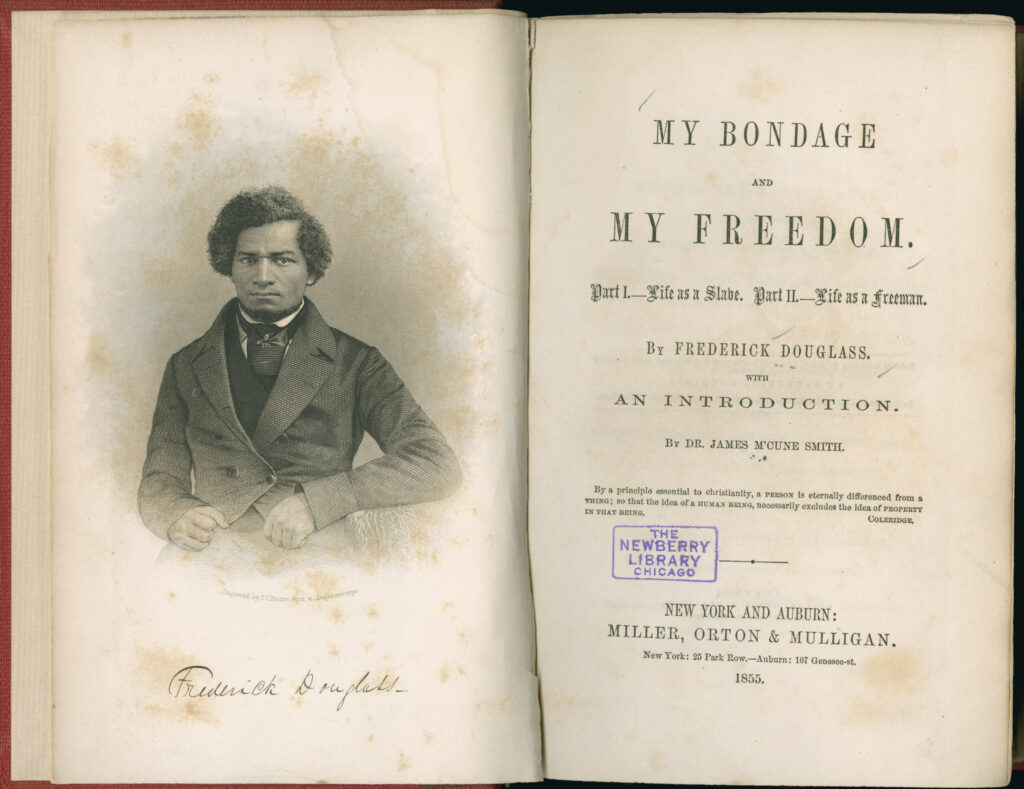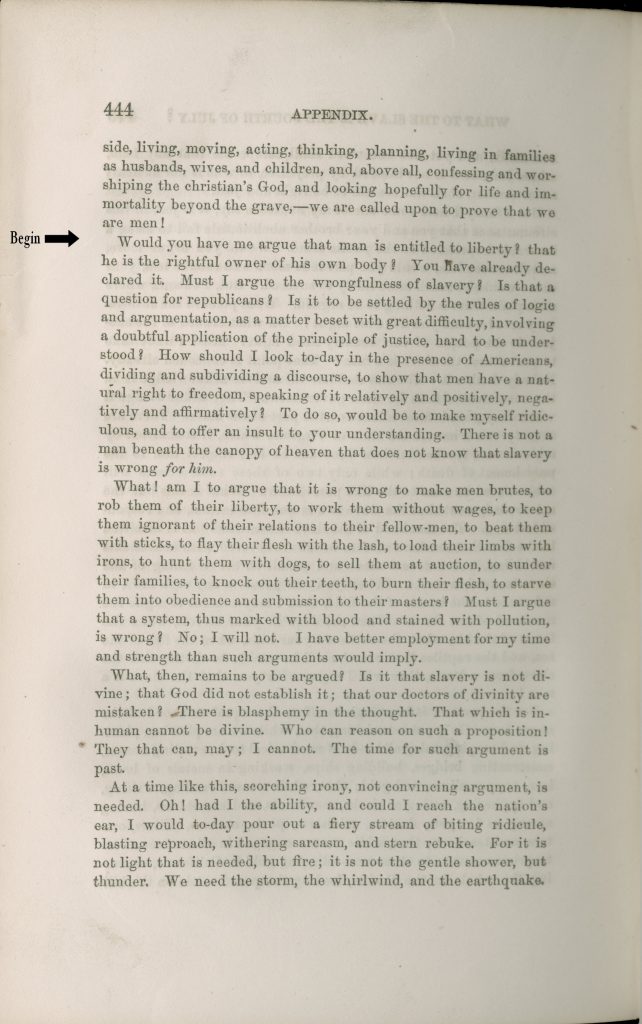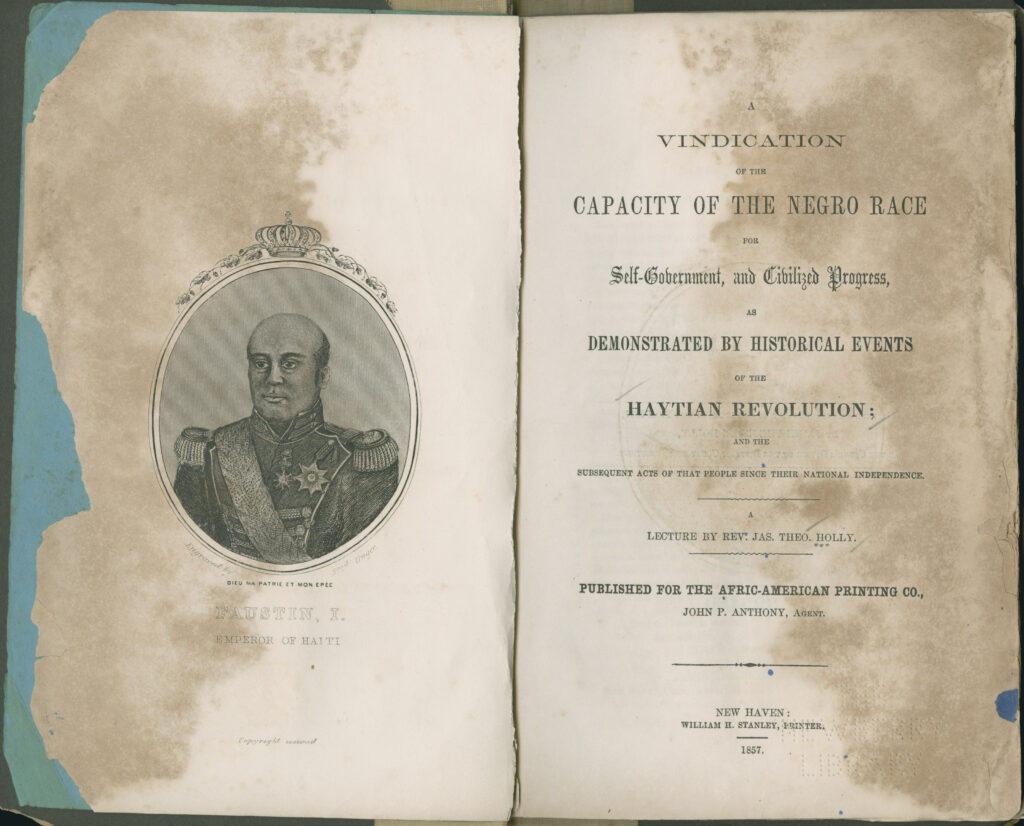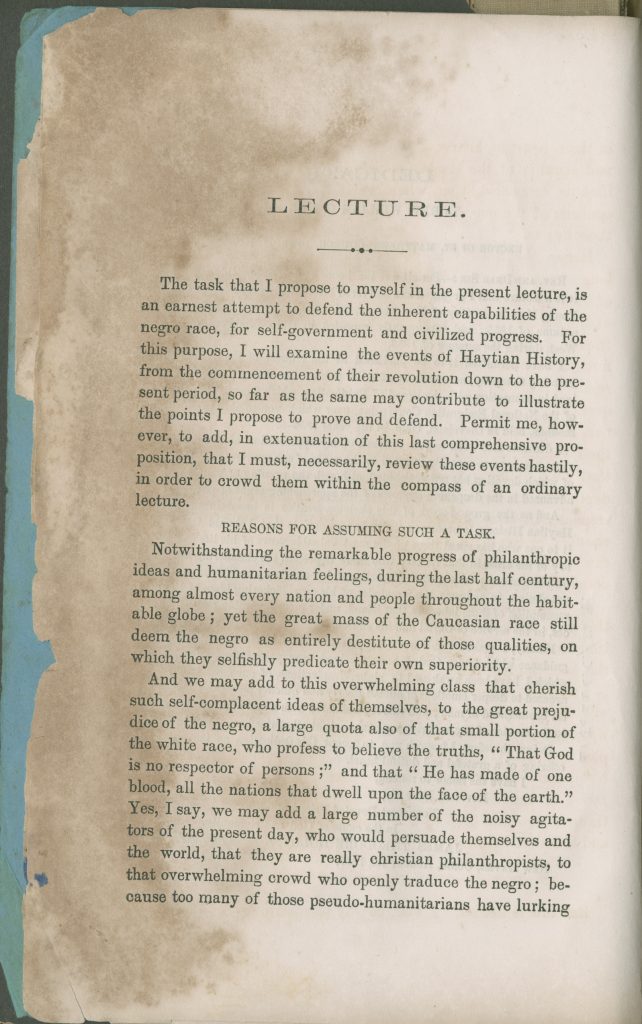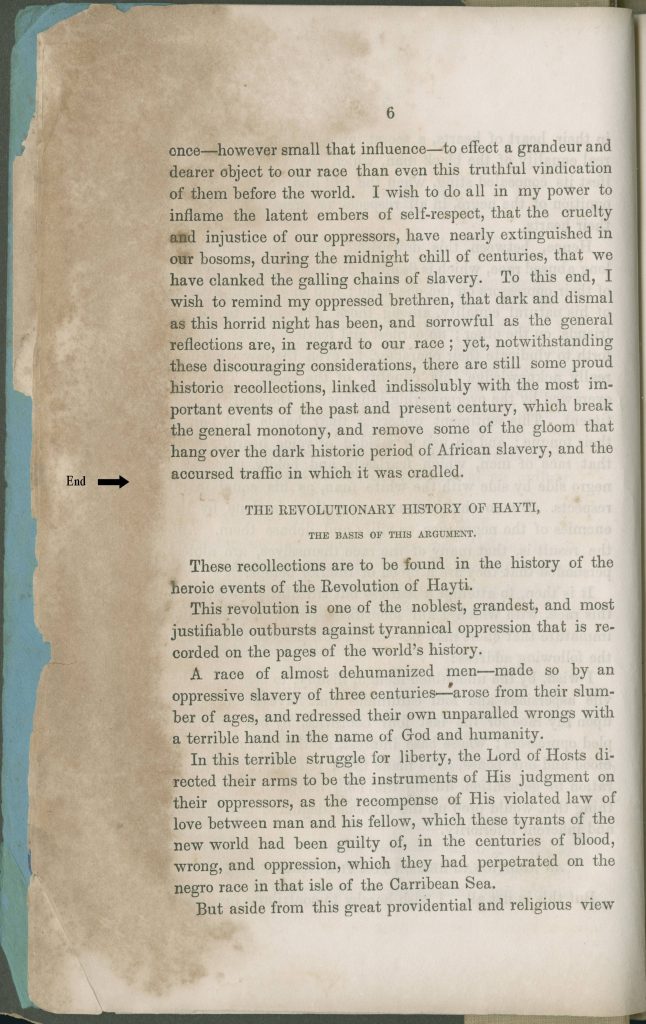Introduction
Did people in the late eighteenth century understand the events of the American Revolution as we understand them now? How did people write the history of the Revolution as the war was occurring? Did people write that history differently in the century that followed? Does the identity of the person writing—or telling—the history make a difference? Do we receive different accounts of the same events from shoemakers or gentlemen or slaves?
Recent historians and literary critics have called attention to the evidence that Revolutionary events and documents that we take to be iconic were often considered minor, or entirely ignored, by people who lived during and immediately after the war. Alfred F. Young shows in The Shoemaker and the Tea Party that the event we know as the Boston Tea Party—a major political event at the start of the Revolution—received scant attention for about 50 years following the close of the war. Indeed, it was not even described in print by the name Boston Tea Party until the 1830s. Similarly, most people today take the second paragraph of the Declaration of Independence to contain its most important passage: “We hold these truths to be self-evident, that all Men are created equal, that they are endowed by their Creator with certain unalienable Rights, that among these are Life, Liberty, and the Pursuit of Happiness.”
By examining different interpretations of the Revolution, we position ourselves to think critically about the process of writing history and about the different uses that history serves.
Yet, Eric Slauter and David Armitage have demonstrated that, in 1776, most Americans overlooked these words to focus instead on the charges against the king and the matter of national independence. There was only “one set of people,” Slauter argues, who “saw this sentence as [the Declaration’s] most important statement: opponents of slavery.” Through abolitionists’ efforts in the late eighteenth and nineteenth centuries, the Declaration’s support of egalitarianism would become one of the most important elements in its overall meaning.
Why does it matter that the meaning of the Revolution changed over time or that the Revolution held—and holds—multiple meanings for people at any given time? By examining different interpretations of historical events, we develop a deeper, more complicated understanding of the events themselves. We also position ourselves to think critically about the process of writing history and about the different uses that history serves. As historian Jill Lepore recently observed, “Beginning even before it was over, the American Revolution has been put to wildly varying political ends. Federalists claimed its legacy; so did anti-Federalists. Jacksonian Democrats said they were the true sons of the Revolution. No, Whigs said, we are. The Union claimed the Revolution; so did the Confederacy.” And certainly recent history, from the Civil Rights movement to today’s Tea Party, bears out Lepore’s claim.
The following collection of documents explores representations of the American Revolution from its earliest moments through the 125 years that followed. The documents include visual representations—maps, illustrations—as well as a variety of written texts—political, literary, musical—created by people of different social status for different audiences. Taken together, these documents encourage us to think in new ways about the history and meaning of the Revolution.
Please consider the following questions as you review the documents
- How did people interpret the events of the Revolution in the eighteenth and nineteenth centuries?
- How did the meaning of the Revolution change over time?
- What conflicts or contradictions exist between different representations of the Revolution?
- What are the reasons for the differences between various accounts of the Revolution?
Writing a Revolution in Progress
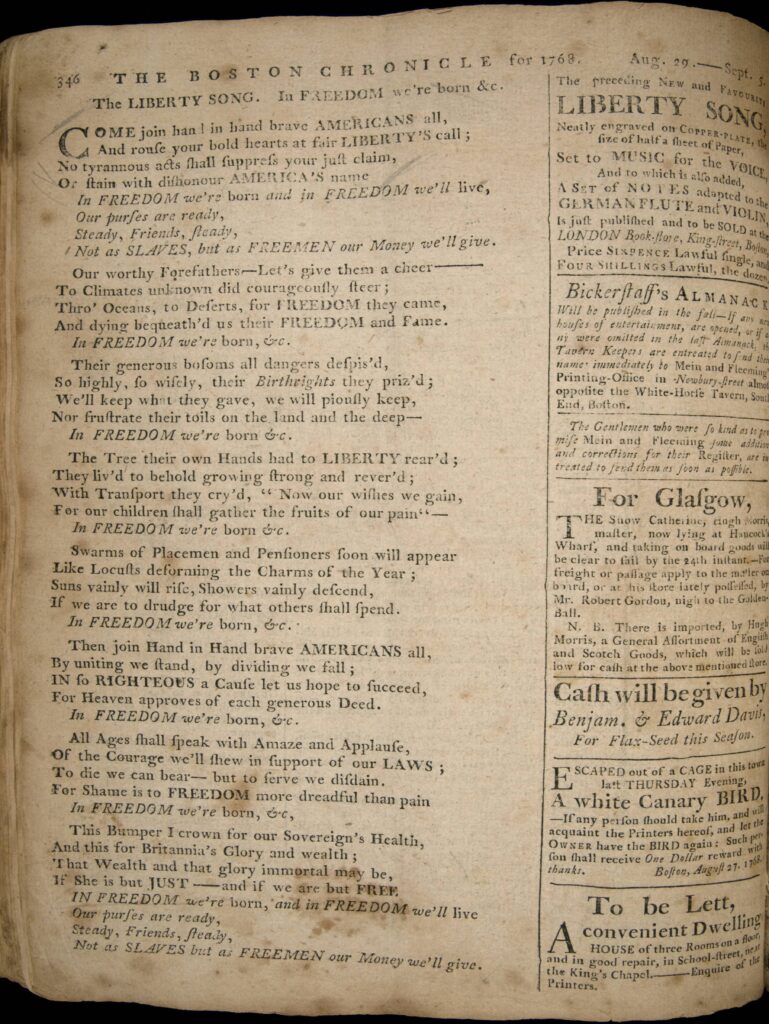
“The Liberty Song” and the Boston, December 17, 1773 broadside shed light on the ways that eighteenth-century Americans represented the Revolution as it unfolded. John Dickinson’s “Liberty Song” is considered America’s first significant political song. It was inspired by the Massachusetts Legislature’s “Circular Letter,” published in February 1768. This letter was written by Samuel Adams to protest the Townshend Acts, laws passed by the British Parliament that taxed colonists for goods such as paper, paint, glass, and tea. The taxes were part of a series of laws, including the Stamp Act and the Sugar Act, designed both to raise revenue and to assert tighter political control over the colonies. When Boston residents resisted paying the taxes, the British government sent troops to occupy the city. The conflict led to the Boston Massacre of 1770.
The broadside, Boston, December 17, 1773, portrays negotiations leading up to the event now known as the Boston Tea Party. The British Parliament had passed the tea tax in May of that year in order to raise funds for the financially strapped East India Company. In late November and early December, three ships arrived in Boston Harbor. As with the earlier Townshend Acts, colonists objected to being taxed by a government in which they did not have representation.
Selection: “Boston, December 17, 1773,” with details (1773).
The broadside below gives an account of a meeting held between the captain of the ship Dartmouth and residents of Boston on the night of December 16. Around 5,000 people attended. The Bostonians had resolved to prevent the captain, Francis Rotch, from unloading his shipment of East India Company tea. Rotch met to hear the colonists’ demands at four o’clock, departed to consult with the colony’s governor, who had been appointed by the king. He returned at six o’clock to report that the governor would not let his ship pass until its tea was unloaded. The meeting was quickly adjourned. The crowd gave a war whoop and rushed to the waterfront. There, about 30 designated leaders (socially distinguished men who were carefully disguised as Indians to avoid recognition) joined another 50–100 men (mostly young and unknown tradesmen in hastily improvised disguises). Before the eyes of one to two thousand silent spectators, they boarded three ships, smashed open the ships’ chests of tea, and dumped the contents into Boston Harbor. As was the custom with important meetings, an account was immediately printed in broadside form and posted in public places.
Two points are worth noting: First, both of these texts present the perspectives of people who resisted British rule. Tories, colonists who were loyal to the Crown, would offer very different accounts of the Townshend Acts and the tea tax. Second, the events to which these writers respond occurred in the years before the military conflict actually began in 1775. It is only in retrospect, knowing the Revolution would soon begin, that historians can look to these sources for evidence of the cultural and political climate that would soon lead many colonists to take up arms against British rule.
Questions to Consider
- Identify the main points of “The Liberty Song.” How does it write the history of the British colonies?
- What does “The Liberty Song” mean by the terms freedom and liberty? How does the song position freedom as fundamental to the colonists’ character?
- What kind of relationship exists or should exist between the people and their government, according to this song? Does the writer reject all relations with Britain or all forms of taxation?
- Who is the audience for this song? Where do you think it may have been sung? (Note: This version of the song is printed in a newspaper. A finer edition is also advertised for sale in the upper right corner.)
- Examine the broadside. How would you characterize the mood of the meeting based on this description? What prompted the colonists to adjourn the meeting and end negotiations? What does the broadside tell you about how the tea action occurred?
- Consider the broadside as a form of communication. Why would broadsides, such as this one, have been significant in the build up to the Revolution? Do we have any comparable forms of communication today?
Imagining the Revolution from Across the Atlantic
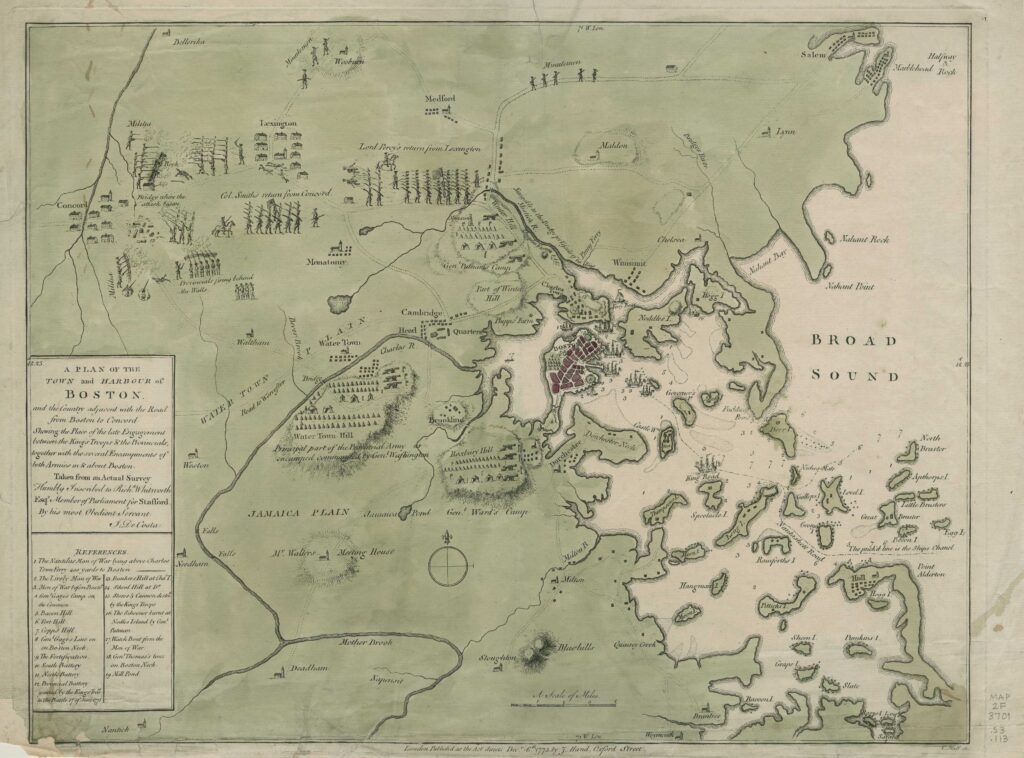

The map and the engraving below are two of the first European representations of Revolutionary America. A Plan of the Town and Harbour of Boston is the first published map of the Revolutionary War. It portrays the battles of Lexington and Concord, which had occurred earlier that year. The battles were prompted by the decision of General Thomas Gage, the commander in chief of British forces in North America, to confiscate stores of gunpowder and weapons kept in Concord by the Massachusetts Provincial Congress. Gage authorized troops, led by Lieutenant Colonel Francis Smith, to set out on the night of April 18. Members of the local militia, known as minutemen, gathered to intercept the British forces. They succeeded in stalling and harassing the British troops, who soon retreated back to Boston. This map was published in London in July 1775, just a few months after the battles occurred.
“John Malcolm” appears in the first French book on the United States. Its title translates as “Collection of Engravings Representing the Different Events of the War That Brought Independence to the United States of America.” The collection presents an illustrated history of the Revolution that pays particular attention to France’s assistance in the war and the benefits to France of Britain’s defeat. It was initially published in Paris in 1783, the same year that the Peace of Paris officially brought the war to a close.

Translation of the “John Malcolm” caption
John Malcolm. The 25th of January 1774, the aggrieved people entered his house unarmed. He injured several people with his sword: but the Bostonians, moderate even in their vengeance, seized him, carried him out the window and placed him in a cart; next he was stripped, tarred, feathered, brought to the town square, beaten with a rod, and forced to thank them for not killing him; then he was brought back to his house without further injury.
This engraving portrays the tarring and feathering of John Malcolm in January 1774. According to historian Alfred Young, Malcolm was an employee of the customs service and a fervent Tory who was notorious among Boston’s patriot tradesmen for his fierce temper and apparent hostility toward people of lower rank. The shoemaker, George Hewes, came upon Malcolm in the street threatening a young boy with a large cane that had a heavy iron head. Hewes approached Malcolm, saying, “I hope you are not going to strike this boy with that stick.” The two men exchanged words and Malcolm struck Hewes on the head with the cane, almost penetrating his skull. Hewes received medical attention and eventually recovered. But that evening, a crowd carried Malcolm out of his house, down the street, to the Liberty Tree (an elm near Boston Common that had been the site of the first Stamp Act protest in 1765). While some gentlemen urged the crowd to leave Malcolm to the courts, the crowd did not trust Tory judges to bring justice. It sought an extralegal form of punishment: Malcolm was stripped to his breeches, smeared with pine tar, coated in feathers, threatened with hanging, and beaten with a rope, until he promised “never again to hold [a position] inconsistent with the liberties of his country.” He was then returned to his house without further injury. As Young explains, Malcolm’s tarring and feathering was an “electrifying event, … part of the upsurge in spontaneous action in the wake of the Tea Party” that demonstrated the strength of public sentiment in Boston against loyalists and “confirmed the British ministry in its punitive effort to bring rebellious Boston to heel.”
Questions to Consider
- Examine A Plan of the Town and Harbour of Boston. What information does the map provide about the region’s topography, or natural and man-made features?
- How does the map convey the action of the battles of Lexington and Concord? What can you tell about each side’s military strategy?
- How does the map distinguish between patriot troops and British troops? Does the cartographer seem to favor one side or the other? Why do you think people in England would be interested in this map?
- Examine the engraving “John Malcolm.” Does the scene appear orderly or chaotic, playful or threatening? How do Malcolm, his assailants, and the onlookers appear? What emotions do they express?
- What appears to be the social status of each figure in the engraving? Is it evident that the event involved conflict between tradesmen and a conservative member of the elite? Why or why not?
- The collection of engravings tells the story of the American Revolution at a time when the events were quite fresh and the consequences of the Revolution would have been unclear. What is the larger narrative that this representation of this episode suggests?
Remembering the Tea Party: Commemorating the Revolution in the Nineteenth Century
The following documents allow us to explore the ways that nineteenth-century Americans wrote the history of the Revolution through representations of one, specific event: the dumping of the tea in Boston Harbor. Historian Alfred F. Young recently discovered that the event we know as the Boston Tea Party largely disappeared from official histories of the Revolution from about 1780–1830. Young suggests several reasons for this neglect: One, participants had been sworn to secrecy and likely feared being prosecuted for the destruction of property if their identities became known. Two, the event prompted a rapid escalation of the conflict. Its significance was soon overcome by the beginning of the war, the declaration of independence, and other important events. Finally, few Revolutionary events were being commemorated during this period, and certainly not the more popular and volatile ones. These events—Young mentions the Stamp Act riots and the numerous tarrings and featherings of Tory customs officers as examples—might conflict with the ideas of national stability and social order that many political leaders sought to convey.
Selection: B. B. Thatcher, Traits of the Tea Party: Being a Memoir of George R. T. Hewes, title page, 178-7 (1835).
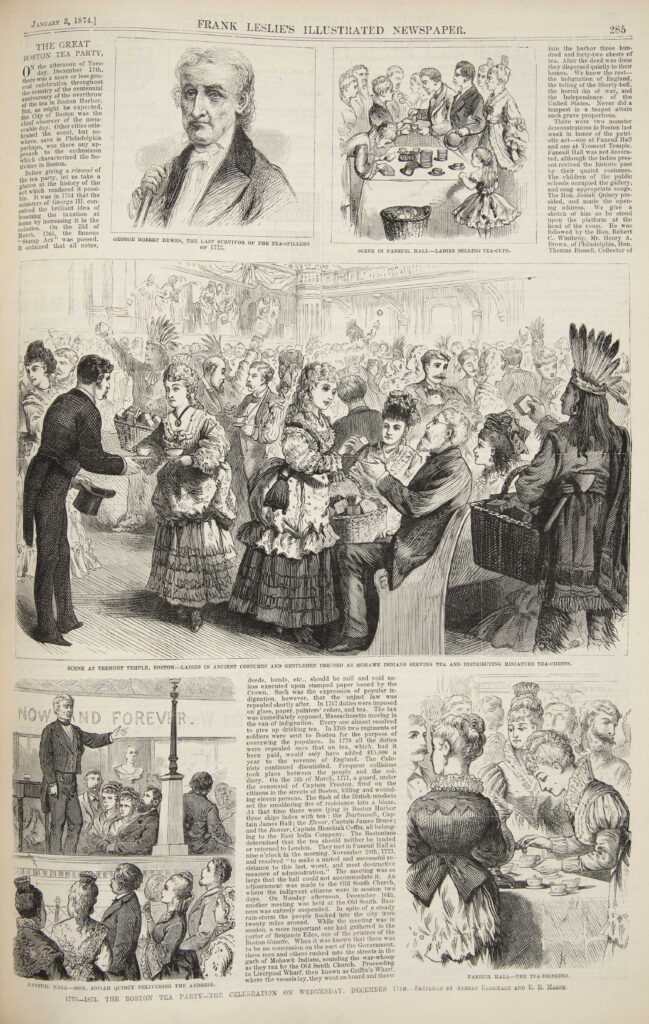
In the 1820s and ‘30s, Americans’ relationship to Revolutionary history began to change as people started to look more closely to the Revolution as a source of national identity. Writers such as B. B. Thatcher noticed that Revolutionary War veterans, such as George Hewes, were quite old (if they were still alive at all) and would not be able to provide first-person histories of the war for much longer. Indeed, two biographies of Hewes were published within a year. The excerpt above includes Hewes’ account of that night in Boston Harbor.
By 1873, the 100th anniversary, the tea event had fully entered official histories of the Revolution. It was widely commemorated with at least three major celebrations occurring in Boston alone. The page from Frank Leslie’s Illustrated Newspaper, reproduced here, describes the celebration sponsored by Boston’s Young Women’s Christian Temperance Association (YWCA). At that celebration, Oliver Wendell Holmes, Sr., read his “Ballad of the Boston Tea Party,” excerpted here. Holmes was a celebrated writer and doctor throughout much of the nineteenth century (He was also the father of the Supreme Court justice who shares his name). The ballad was later included in a collection of poems published in tribute to his grandmother’s and great-grandmother’s generations and their experience of the Revolution.
Selection: Oliver Wendell Holmes, A Ballad of the Boston Tea Party, title page, 34-39, 42-43, 46-47, 50-53 (1893).
Questions to Consider
- Historian Alfred Young discovered that no publication referred to the tea-dumping event as a “tea party” until the early 1830s. Before then, the event was known, at least in print, as “the destruction of the tea.” How might the new name shape interpretations of the event? What are the connotations of naming this event a “tea party”?
- Consider Thatcher’s and Hewes’ description of events on the night of December 16, 1773. How was the tea action conducted? What was Hewes’ role?
- Why does Hewes report on and then confront Charles O’Connor? Why do you think Thatcher and Hewes were concerned to demonstrate that little or no tea was taken on shore?
- Based on this description, would you characterize the event as tumultuous or orderly? On what grounds? What code of conduct do the participants seem to follow?
- How would you characterize the narrative voice in Traits of the Tea Party? Do see evidence of ways in which Thatcher, as the writer, framed or interpreted Hewes’ oral history?
- Why do you think the leaders and many participants disguised themselves specifically as Mohawk Indians? What political symbolism do you think the participants wanted to convey through their disguises as well as their other actions that night?
- Examine the newspaper coverage of the YWCA’s centennial celebration. What did participants do to commemorate the Boston Tea Party? Why might the Tea Party have been an appealing event to commemorate in the late nineteenth century? What political symbolism or significance does the celebration involve?
- Consider Holmes’ “Ballad of the Tea Party” and the accompanying engravings by Howard Pyle. How does Holmes write the history of the tea dumping in his ballad? As he imagines it, who participated in the event?
- Both the YWCA celebration and Holmes’ poem identify a role for women in the tea event, though they’re not visible participants in the action at Boston Harbor. How might women have contributed to the original event and why might they be such prominent participants in later tributes?
- What was the mood of the event as Holmes and Pyle portray it? What is the tone of the poem? What makes this event worth remembering and commemorating?
“What To the Slave Is the Fourth of July?”: African American Responses to the Revolution
Historians as well as students today continue to struggle with the question of how the Revolution’s leaders made such forceful arguments for freedom and self-government while perpetuating the enslavement of roughly one-fifth of the American population. A number of African American writers, some of them former slaves, raised this question themselves in the late eighteenth and early nineteenth centuries. The documents that follow were written by three African American abolitionists and published in the 1850s.
Selection: William C. Nell, Services of Colored Americans, in the Wars of 1776 and 1812, title page, 17-18 (1851).
William Cooper Nell was a journalist and historian who campaigned to end school segregation in Boston. In Services of Colored Americans, he recovers the history of African American participation in the Revolution. In subsequent years, he successfully petitioned the City of Boston to recognize Crispus Attucks, an African American who died in the Boston Massacre. Frederick Douglass was a celebrated writer and speaker on behalf of abolition and civil rights as well as a former slave. He delivered this speech in Rochester, New York, in 1852 and included it in this edition of his autobiography, My Bondage and My Freedom.
Selection: Frederick Douglass, “What to the Slave Is the Fourth of July?” in My Bondage and My Freedom, title page, 441, 444-445 (1855).
James Theodore Holly was an ordained Episcopalian priest, originally from Washington DC, who spent much of his life in Haiti and urged other African Americans to emigrate there to establish a stable, independent, black nation in the Western Hemisphere. (From 1791 to 1804, Haitians had successfully overthrown both slavery and French colonial rule in a revolution that had deployed the principles of the American and French Revolutions against the institution of slavery.) Holly delivered this lecture to the Literary Society of Colored Young Men in New Haven, Connecticut, in 1855.
Selection: James Theodore Holly, A Vindication of the Capacity of the Negro Race for Self-Government, title page, 4-6 (1857).
Taken together, these writers, who knew one another and worked on behalf of the cause of equality, offer three distinct responses to the problem of race, slavery, and the American Revolution.
Questions to Consider
- What information does Nell provide about African American service in the Revolution? Why do you think he felt it was important to recover this history of African American participation in the Revolution?
- How does Frederick Douglass interpret the meaning of the American Revolution? How does he criticize both the founders and nineteenth-century Americans? What, does he argue, is the Revolution’s relevance to his audience in the 1850s?
- Why does Holly speak to his audience about the Haitian Revolution? What is its relevance to Americans, in general, and African Americans, specifically?
- Consider these three sources together. What are the relationships between these writers’ different subjects and strategies? How did their arguments contribute to the cause of ending slavery and establishing political equality for African Americans?
Writings on the Revolution as it Unfolded
“The Liberty Song” and the “Boston, December 17, 1773” broadside shed light on the ways that eighteenth-century Americans represented the Revolution as it was unfolding.
European Representations of Revolutionary America
These materials–the first published map of the Revolutionary War, which depicted the battles of Lexington and Concord, and an illustration from a French book of the tarring and feathering of John Malcolm–capture European representations of the Revolution.
Remembering the Revolution in the Nineteenth Century
In the 1820s and 1830s, as Americans began to look more to the Revolution as a source of national identity, authors like these ones below wrote the history of the Revolution through a focus on the specific event of the dumping of the tea in the Boston Harbor.
African American Responses to the Revolution
These documents, written by three African American abolitionists and published in the 1850s, respond to the contradiction of how the Revolution’s leaders made powerful arguments for freedom and self-government while also perpetuating slavery and racial inequality.
Further Reading
Armitage, David. The Declaration of Independence: A Global History. Cambridge, MA: Harvard University Press, 2007.
Breen, T.H. “Whose Revolution Is This?” Washington Post March 31, 2010. www.washingtonpost.com/wp-dyn/content/article/2010/03/30/AR2010033003252.html
Johnson, Richard Colles and Cynthia H. Peters, compilers. A Princely Gift: The Rudy Lamont Ruggles Collection of the Newberry Library. 1986.
Lepore, Jill. “Tea and Sympathy: Who Owns the American Revolution.” The New Yorker May 3, 2010. www.newyorker.com/reporting/2010/05/03/100503fa_fact_lepore?currentPage=all
Newberry Library. “Political and Military History: Map 13: A British Plan of Revolutionary Boston, 1775.” In Historic Maps in K-12 Classrooms. http://publications.newberry.org/k12maps/module_13/9-12.html
Slauter, Eric. “Life, Liberty, and the Pursuit of Happiness–How did these words become the most important in the Declaration of Independence? The answer starts with a small band of motivated Americans.” Boston Globe July 3, 2011. www.boston.com/bostonglobe/ideas/articles/2011/07/03/life_liberty_and_the_pursuit_of_happiness.
Slauter, Eric. The State as a Work of Art: The Cultural Origins of the Constitution. Chicago: University of Chicago Press, 2009.
Young, Alfred F. The Shoemaker and the Tea Party: Memory and the American Revolution. Boston: Beacon Press, 1999.



